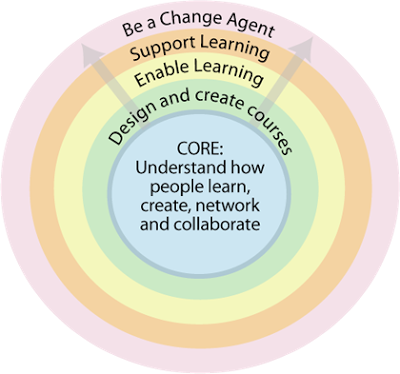ATD Blog
What will your training role be in the future?
Mon Feb 13 2012

After TechKnowledge 2012, I was inspired to think again about the role that learning and development professionals can look forward to in the future. For those who remain flexible and partake in continuous learning, I think the 21st century will be filled with exciting opportunities.
With cultural shifts slipping into the workplace, technologies changing at rapid speed, and an improved understanding of how adults learn, it's not surprising that many in our field are wondering what their training-related job might look like in the future.
One thing seems nearly certain - as time passes, the role of the training professional and instructional designer will be transformed. This is why various titles for our new role are being suggested, such as "Learning Experience Designer" and "Learning Architect" (see review of Clive Shepherd's book, The New Learning Architect).
There are many ways to imagine what will happen based on what is occurring today. One way to organize our thoughts about the future of the training and development professional is to think in terms of four roles that are based on how people learn, create, network, and collaborate. It seems feasible that all future roles could be based on this type of understanding, as represented in the diagram below.
Possible future roles of the Learning and Development professional. Start with the core and work outward. |
Each role defined here moves progressively further away from the traditional course design role. Perhaps the individual Learning and Development (L & D) professional will fulfill several of these roles simultaneously.
Design and Create Courses: This is currently the most well-used role in the L&D repertoire. It involves using a systematic process to design and develop (and sometimes teach) courses and supplementary materials, such as performance support tools, for a specific workforce. The range of methodologies for doing should continue to expand. Using anything from the ADDIE model and it's many adaptations, to Thiagi's Four Door Model to Rapid eLearning development, there are many organizations who will continue to require courses for compliance, new hire and other types of structured training.
Enable Learning: In this role, the L&D professional provides opportunities for a motivated workforce to learn and grow. These opportunities may be structured or unstructured, but they need not be tracked and have a certain informality and free flow to them. For example, setting up communities of practice, putting on special events with experts and teaching interested employees about enterprise collaboration tools are all ways to enable learning.
Support Learning: In this more learner-centric approach, employees choose how and when they need to learn, dependent on their job tasks and interests. They may use the L&D professional as a resource for getting the on-demand information and training to meet their personal needs. For example, an L&D professional could moderate an online community, work with IT to design a social network or ensure there are no obstacles in the way of employee's creating their own Personal Learning Environments.
Be a Change Agent for Development: In this role, the L&D professional envisions and champions critical transformations that are necessary for an organization to move forward. Savvy L&D professionals will be able to see where obstacles exist and provide insight and leadership for implementing innovative solutions, particularly as they affect professional development.
What do you think the future role of the training professional will be?
Connie Malamed_(@elearningcoach)_publishes The eLearning Coach, a website with articles, resources, reviews and tips for learning professionals. She is the author of Visual Language for Designers and the Instructional Design Guru iPhone app.
